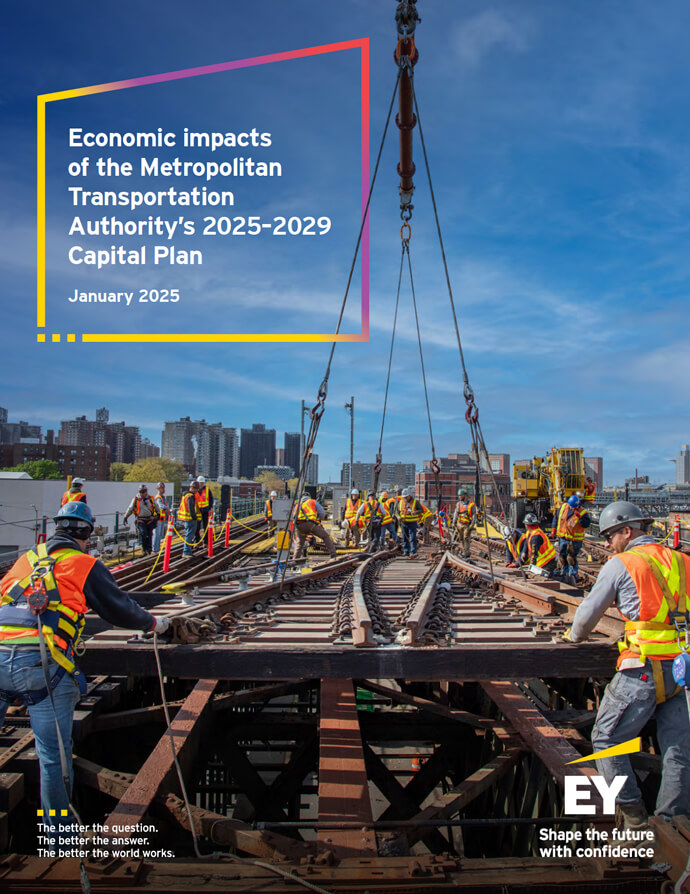Overview
The Metropolitan Transportation Authority (MTA) carries over 5.5 million passengers every weekday across its network of subways, buses and commuter rails. This infrastructure supports the economy of New York by allowing efficient movement across the region. The MTA’s 2025-2029 Capital Plan builds on previous investments by continuing to modernize and expand the transit system.
The Partnership for New York City (PFNYC) engaged Ernst & Young Infrastructure Advisors, LLC (EY) to prepare an analysis of the potential economic impact of the MTA’s proposed 2025-2029 Capital Plan on New York state and its regions.
This analysis focuses on the economic impacts from construction and other spending activities of the proposed Capital Plan, and does not quantify any potential positive or negative externalities, such as those arising from changes in transit service or reliability or through the financing and funding of the program.
$106B
$106 billion of economic output will be generated statewide over five years from the Capital Plan's proposed direct expenditure of $68.4 billion.
72,700
An average of 72,700 jobs will be supported over the five years.
Report Highlights
The Capital Plan will result in on-site construction and engineering services, as well as purchases of New York-manufactured equipment. This activity will support jobs, incomes and business sales throughout New York state.
Statewide Impact
The analysis estimated that the MTA’s $40.8 billion of spending with New York state vendors would support an average of 29,100 direct jobs—or one direct job for every $281,000 of spending.
Regional Impact
The majority of the employment impacts will occur in the New York City, Long Island, and Hudson Valley regions—primarily reflecting the location of construction and maintenance services performed within the MTA operating region. The five boroughs of New York City will capture $48.3 billion of the direct Capital Plan spend (78% of estimated instate expenditures)—supporting approximately 144,800 direct worker years and an average of 29,000 direct jobs in the city over the five-year investment period.
Key Takeaways
The proposed Capital Plan is expected to include major purchases of key equipment from manufacturers in New York, including new rail and subway cars, buses, new signaling equipment, and additional tracks. Implementation of the plan relies on the expertise and services of New York-based construction, engineering, and professional services firms and thousands of New York workers. Collectively, this activity supports both direct and indirect jobs and business revenues throughout the state.
